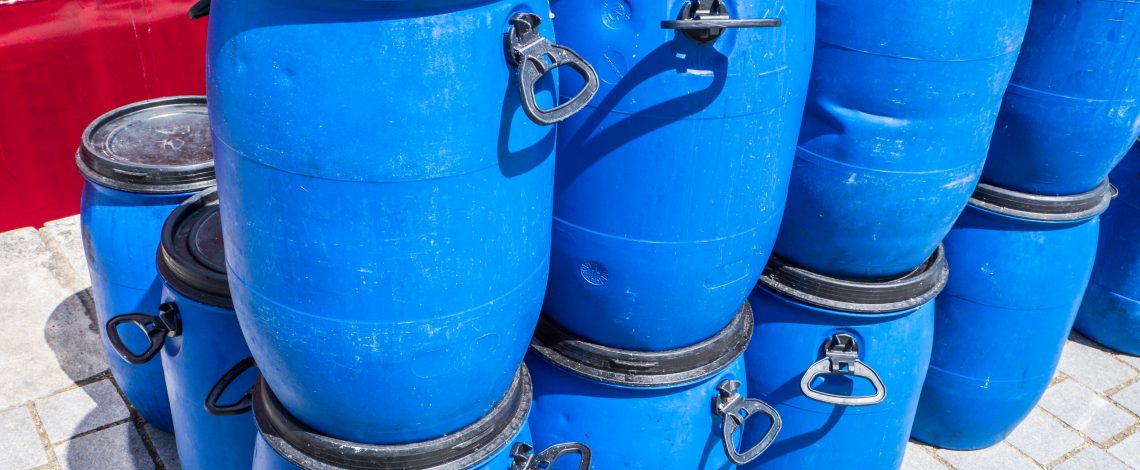Chances are, you probably don’t realize what the U.S. government considers hazardous mail. While some substances are obvious others seem relatively harmless. The government even classifies some household items as dangerous.
However, sending hazardous materials in the mail at worst comes with consequences, and at best, the shipping provider just won’t send your package.
Though luckily, you can send hazardous materials to your heart’s content, so long as you package them correctly. Today, we’re going to explain the correct way to package and ship hazardous material.
What Materials are Accepted?
The following materials are legal to send through the mail, provided you package them correctly.
- Explosives
- Flammable Gas
- Non-flammable Gas
- Flammable Liquid
- Flammable Solid
- Oxidizer
- Organic Peroxide
- Radioactive Material
- Corrosive Material
- Miscellaneous Hazardous Materials
- ORM-D2 Consumer Commodity (ORM-D)
- ORM-D2 Cartridges, Small Arms (ORM-D)
Note that any of the above materials refer to classifications within the U.S. legal code. Each classification details the exact circumstances, and in some cases items, that you’re allowed to ship.
Some items that would fall into these classifications aren’t allowed in the mail. You might technically have an item that’s an “explosive” but it’s prohibited per the U.S. legal code.
Always refer to the legal code before trying to ship hazardous material. There’s nothing more frustrating than getting to the post office (or private carrier) only to find out you can’t ship your item.
What Materials are Prohibited?
Now that we’ve touched on what you can ship, we also need to talk about prohibited materials. This list is significantly longer, and more complex. The reason being, prohibited materials vary based on where you’re shipping the material, the carrier, and more.
What follows is a simple list of commonly prohibited materials:
- Marijuana of any kind. This includes medical marijuana.
- Ammunition that’s being shipped outside of the United States.
- Radio-active materials.
- Some carriers don’t allow fireworks, though some do.
- Many carriers restrict shipping large amounts of high-value items such as gold and silver ore, expensive watches, and fiat currency.
- Most carriers restrict the transportation of corpses and other earthy remains.
- Like high-value items, many carriers won’t ship stocks. bonds, share certificates and blank signed share transfer forms.
- Fish, livestock, insects, and other organic materials are heavily regulated and shipping these items internationally is often prohibited.
Though all of the above items are commonly prohibited, not all of the items are always prohibited. Which items are and are not legally banned often comes down to legal definitions.
For carrier restrictions on the ban list, it’s sometimes even more arbitrary. Some carriers assign the “high-value” definition far more liberally than their counterparts. How much liability the carrier is willing to accept usually determines the definition of “high-value.”
Identifying prohibited items means understanding federal laws and carrier restrictions.
How to Package and Ship Hazardous Material
Title 49 of the U.S. code explains the regulations surrounding shipping hazardous materials. Specifically, 49 CFR lays out protocols for shipping and packaging hazardous materials.
Under the code, packaging regulations include:
- Packing must include a prepared hazardous materials shipping form OP-900LL or OP-900LG attached to the outer top of the package. You must affix the form next to the address label and include both the “To” (recipient) and “From” (shipper) addresses.
- You must pack small arms ammunition inside boxes partitioned within a snugly-fitting outside box. The shipper must cushion and protect the ammunition from incidental initiation. Packages may not exceed 66 lb. (30 kg).
- Shippers are responsible for selecting and using packaging that’s tested, designed, and certified for hazardous materials.
In addition to these requirements, there are other detailed requirements that are crucial to complying with federal law.
Make sure you’re up-to-date on the requirements before shipping your package. This means not only that you’ve read 49 CFR, but also that you understand what you’re reading.
Yes, it’s a lengthy statute, however, it’s nothing the average person can’t finish and understand within a few hours.
The Carrier Responsibilities
Shippers should understand U.S. regulations on dangerous materials, but some of the responsibility falls on the carrier.
If you’re having trouble understanding the regulations, always ask your carrier for help. They’ll know the law better than you, plus, they’ll also have insight into their own shipping regulations.
Ultimately, the shipping responsibility falls on the carrier. They’re the one sending the package through the mail, and they’re the one who has to abide by any laws and regulations.
That’s why it’s so important to choose a good carrier (though we’ll touch on that in a second). Reputable carriers will help you legally package your materials.
Choosing Your Carrier
Choosing the best carrier to ship hazardous material comes down to choosing a carrier that’s experienced, and someone you can trust. Always ask about their hazardous materials policy before you send a package.
Reputable carriers will have no problem explaining exactly how to package any material that you can legally mail. After all, sending things through the mail is their business. The more packages you send, the more money they make.
Some carriers also offer boxes pre-approved for shipping dangerous materials. These packages are available at a nominal price and are perfect for someone who’s too busy to read up on shipping regulations.
If you’re looking for a carrier, get in touch with us. Our experts have experience shipping just about anything. We’re up-to-date on the local laws and regulations surrounding shipping hazardous materials.
Let our experts make sure your package gets from point A to point B safely, securely, and quickly.



